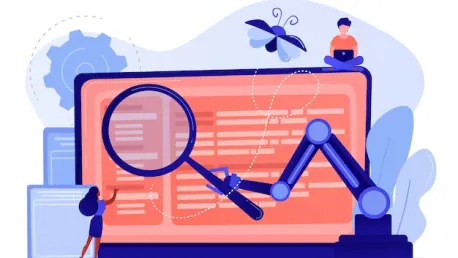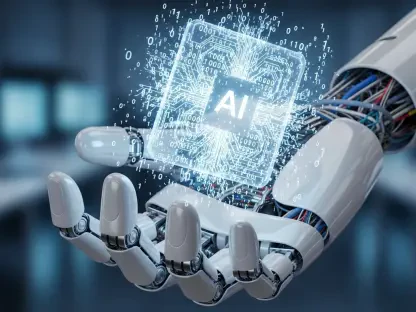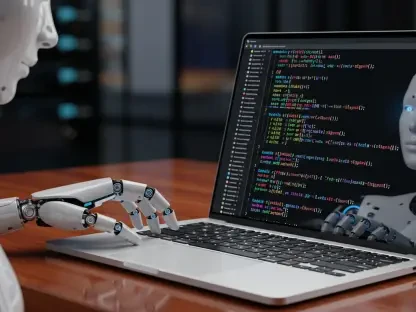The rapid advancement of artificial intelligence (AI) has left its mark on several industries, including software development and quality assurance. Organizations have been grappling with the challenge of accelerating release cycles without sacrificing the quality of their software. Traditional testing methods are increasingly inadequate in meeting these demands, leading many QA teams to adopt AI-driven test automation as a solution. This shift promises to redefine the landscape of test automation in DevOps, driving efficiency and ensuring high software quality.
AI’s Impact on Release Velocity
Accelerated Code Deployment
The use of AI in DevOps is markedly improving the speed at which teams can deploy code. This year, 46% of teams have managed to deploy code 50% faster than the previous year. This acceleration can be largely attributed to the automation of repetitive and time-consuming tasks, such as test creation and maintenance, which were traditionally handled manually. AI tools can adapt to changes in the codebase quickly, ensuring that testing keeps pace with development.
The acceleration in release cycles does not merely increase the frequency of code deployment. It also allows development teams to respond rapidly to market demands and user feedback, thus enhancing the overall software development lifecycle. QA teams benefit significantly from this reduced time burden, allowing them to focus on more complex testing scenarios that require human expertise. Additionally, AI supports better integration of various DevOps tools, creating a seamless workflow that enhances collaboration between development and operations teams.
Overcoming Test Maintenance Challenges
One of the persistent challenges in test automation has been the maintenance of test cases. Test maintenance consumes about 20% of team time, a significant portion which could be better utilized in other critical areas. AI is being leveraged to address this issue by automatically updating test cases to align with the evolving codebase. This dynamic adjustment ensures that test cases remain relevant and efficient, significantly reducing the time required for test maintenance.
Furthermore, AI algorithms can analyze previous test results and detect patterns, which can help in predicting potential failure points in the software. This predictive capability enables QA teams to preemptively address issues, thereby improving overall test efficiency. Enhanced test maintenance through AI also ensures that quality standards are consistently met, even as release cycles become shorter. As a result, the overall stability and reliability of the software are significantly improved.
The Rise of AI Adoption in Testing
Increased Integration of AI Tools
The current trend shows a significant rise in the adoption of AI tools within the sphere of software development and testing. Notably, 55% of organizations are now employing AI-driven tools, with mature DevOps teams leading at a 70% adoption rate. These AI tools are not just supplementary; they are becoming integral components of the DevOps process. They are utilized for various tasks, including automated test generation, anomaly detection, and performance testing, all of which contribute to a more efficient testing process.
This widespread adoption highlights a shift in the industry towards more technologically advanced methodologies in software testing. The use of AI tools allows organizations to leverage the power of machine learning and data analytics to enhance testing accuracy and efficiency. AI-driven testing tools can rapidly process large volumes of data, identify vulnerabilities, and suggest optimizations, making them invaluable assets for QA teams striving to keep up with the pace of modern software development.
Addressing AI Implementation Challenges
Despite the many benefits, the journey to fully integrating AI in test automation is not without its challenges. One of the primary hurdles is the initial investment in AI technologies, which includes both financial costs and the time required for implementation and training. However, this investment is increasingly seen as necessary, with 38% of non-AI users planning to invest in AI-driven automation this year. This trend indicates a growing recognition of the long-term value that AI can bring to the test automation process.
Another challenge is achieving sufficient test coverage. Currently, only 14% of QA teams report achieving over 80% test coverage, suggesting that there is still much room for improvement. AI can help bridge this gap by enabling more comprehensive and effective testing strategies. By continuously learning from historical test data, AI tools can optimize test coverage, ensuring that even the most nuanced aspects of the software are thoroughly examined. This capability helps organizations meet their quality objectives while maintaining accelerated release schedules.
Future of QA with AI
Growing QA Budgets and Investment
There is a noticeable trend of increasing budgets among organizations for their QA departments. This year has seen 51% of organizations enhance their expenditure on QA hires, while 62% are investing more in automation tools. This growth in budget allocation indicates a broader understanding of the importance of having robust QA processes, especially with the shift towards AI-driven automation to meet the rising demands of software quality and reliability.
Investment in AI and automation tools is viewed as crucial for coping with the dynamic and fast-paced nature of modern software development. With more resources allocated towards these technologies, organizations can expect a significant improvement in both the efficiency and effectiveness of their QA processes. The focus is not just on speeding up release cycles but also on ensuring that each release maintains high standards of quality, ultimately leading to a better user experience and increased customer satisfaction.
Educational and Professional Development
As AI becomes a staple in test automation, there is a parallel push for educational and professional development in this area. Companies like mabl are leading the charge by organizing events and providing resources to disseminate knowledge on AI-driven testing practices. This year, for instance, mabl is set to host the AI & Software Quality Summit in San Francisco, Chicago, and Atlanta, providing a platform for professionals to learn, share, and innovate.
Educational initiatives are crucial in helping QA professionals stay abreast of the latest trends and advancements in AI and test automation. Continuous learning and skill development ensure that QA teams can effectively leverage AI tools and methodologies, leading to more efficient and reliable testing processes. Organizations that invest in the professional development of their QA teams are likely to see better adoption and implementation of AI-driven automation, ultimately resulting in higher quality software and faster time-to-market.
The Road Ahead
The rapid advancement of artificial intelligence (AI) has significantly impacted various sectors, notably software development and quality assurance. Organizations frequently grapple with the challenge of speeding up release cycles without compromising the quality of their software products. Traditional testing methods are progressively falling short of meeting these fast-paced demands. As a result, many QA teams are turning to AI-driven test automation to bridge this gap. The transition to AI-powered testing is poised to transform the landscape of test automation within the DevOps realm, boosting efficiency and ensuring high software quality. AI’s role in automating tests allows for quicker identification of bugs and vulnerabilities, which in turn helps maintain the integrity and performance of software applications. Moreover, AI-driven tools can learn from past data to predict potential problem areas, enabling proactive measures. This innovation not only enhances productivity but also reduces time-to-market for new software releases, positioning organizations to stay competitive in a dynamic digital environment.









